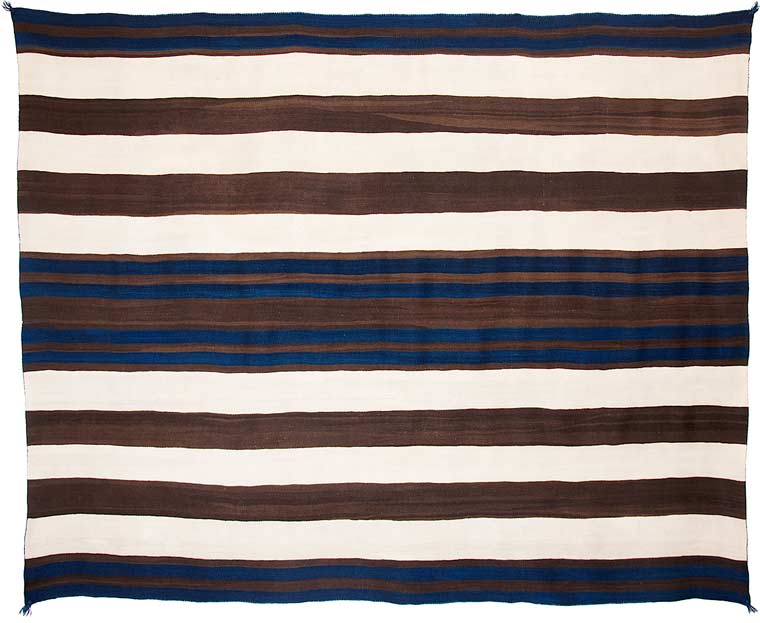#1. A Classic First Phase Chief’s Blanket, Ute Style, Navajo, circa 1840, also known
as the Berlant First Phase. The first phase measures 61 inches long by 77 inches wide, as woven.
#1. A Classic First Phase Chief’s Blanket, Ute Style, Navajo, circa 1840, also known as the Berlant First Phase. The first phase measures 61 inches long by 77 inches wide,
as woven.
The Berlant First Phase is what I call an "across-the-room" first phase. When people see it from the other side of a large room, they’re drawn to the way it looks on the wall. Its combination of variegated brown yarns, radiant blue yarns, and ivory / white yarns creates an atmospheric depth that gets and holds people’s attention. In 1991, at the opening of the Navajo chief’s blankets show at the Monterey Peninsula Museum of Art, people lined up to stand in front of this first phase.
Due to its collection history, its museum exhibitions, and its illustrations in Walk In Beauty and The Berlant Collection of Navajo Blankets, the Berlant First Phase is one of two Navajo first phases that qualify as candidates for the most famous first phase in the world. The other candidate is the Chantland Bayeta First Phase, which sold at auction in 2012, for $1,800,000.
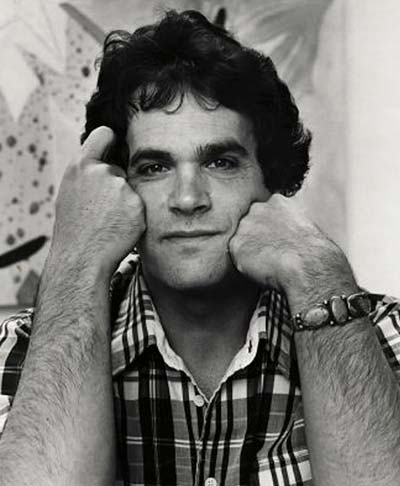
Tony Berlant, 1975. Photograph by Mimi Jacobs.
“I am an involuntarily committed collector, and have focused on aspects
of American Indian Art. The areas I chose to specialize in, Navajo blankets,
Mimbres pottery, and early man sculptures, knocked me out... and the lack
of interest in these areas made it possible to assemble great collections.”
Berlant, from a 2017 interview by Amanda Quinn Oliver, editor of Curator.
“I am an involuntarily committed collector, and have focused on aspects of American Indian Art. The areas I chose to specialize in, Navajo blankets, Mimbres pottery, and early man sculptures, knocked me out... and the lack of interest in these areas made it possible to assemble great collections.”
Berlant, from a 2017 interview by Amanda Quinn Oliver, editor of Curator.
The first phase is ex- Tony Berlant, of Santa Monica. Berlant was born in New York, in 1941. He started collecting Navajo blankets during the 1960s, while he was a graduate student at UCLA, in Los Angeles. In 1969, Berlant bought the first phase at the Oakland Flea Market in Oakland, California.
While he was a student at UCLA, Berlant began his career as an artist. After starting with abstract paintings, he began to make collages and sculptures. Some of Berlant’s early collages were made with sections of blue jeans that Berlant had cut into rectangular fragments, and then arranged on flat surfaces to create variegated blue collages.
By the late 1970s, Berlant had started cutting up tin advertising signs and tin foot lockers and re-assembling the pieces of cut tin into collages. Some of Berlant’s tin collages took the forms of small houses. The majority were large flat collages which he displayed on the walls of his studio and home in Santa Monica.
The context for Berlant’s collages was the Found Art Movement. Beginning during the 1910s, with the Dada Movement, Marcel Duchamp, and Duchamp’s obsession with what he called “readymades,” European and American artists found items at junk yarns and incorporated their “found” items into collages, paintings, and sculptures. Duchamp’s Bicycle Wheel, 1913, is an example of how Dada led to Found Art. Robert Rauschenberg’s Monogram, 1955-1959, is another. According to Duchamp: “An ordinary object could be elevated to the dignity of a work of art by the mere choice of the artist”.
Berlant’s association with Found Art had a direct influence on his decision to collect Navajo blankets. In the same way that Duchamp had found art objects at junk yards in Paris, Berlant bought his first phase at the Oakland Flea Market. The Navajo blankets Berlant collected during the 1960s and 1970s were classic works of American art. For Berlant, Navajo blankets were “readymades.”
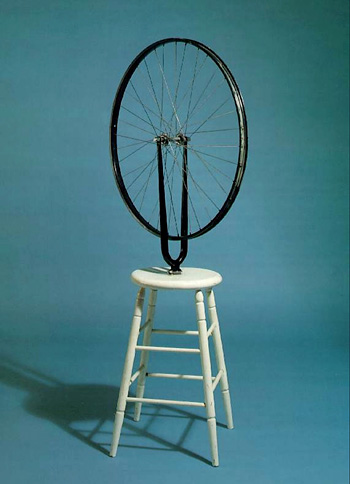
Bicycle Wheel, Marcel Duchamp, 1913

Monogram Robert Rauschenberg, 1955-1959
My family and I met Tony Berlant in 1982. Tony was the first person to encourage me to move to Santa Fe, and to start buying and selling Navajo blankets.
Between 1982 and 1992, Tony and I looked at as many of his tin collages as we looked at Navajo blankets. In 1992, I got up the nerve to ask Tony if he saw a connection between his cutting up blue jeans for his early collages and classic Navajo weavers’ cutting bolts of bayeta into strips, to ravel their red yarns from the strips. Tony said, “I never thought of it that way, but now that you mention it, it makes perfect sense.”
Between 1982 and 1992, Tony and I looked at as many of his tin collages as we looked at Navajo blankets. In 1992, I got up the nerve to ask Tony if he saw a connection between his cutting up blue jeans for his early collages and classic Navajo weavers’ cutting bolts of bayeta into strips, to ravel their red yarns from the strips. Tony said, “I never thought of it that way, but now that you mention it, it makes perfect sense.”

October, 1991, by Tony Berlant.
Tin collage on a wood frame.
Illustrated on the cover of Tony Berlant: New Work 1990 – 93.
LA Louver, Venice, California. 1993
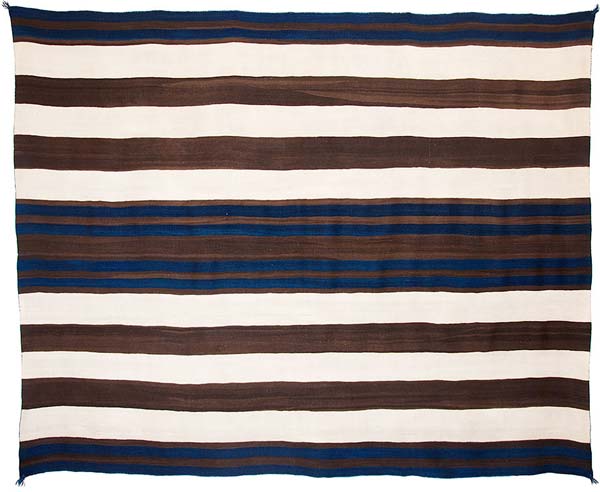
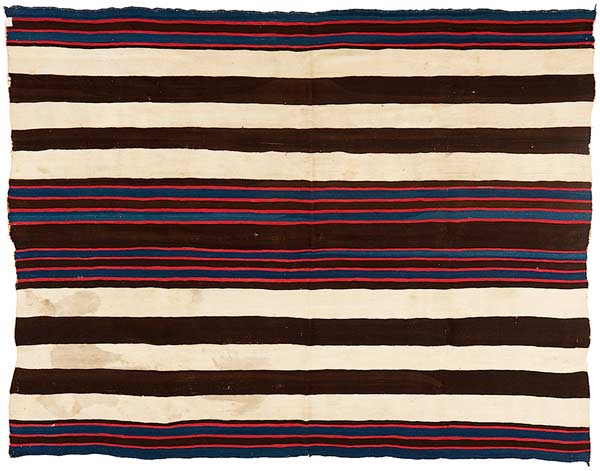
Above: The Berlant First Phase, Ute Style, Navajo, circa 1840.
Below: The Chantland Bayeta First Phase, Navajo, circa 1840.
Ute Style first phases have brown and white bands, and pairs of blue stripes, but no red stripes. The Utes were the Navajos’ immediate neighbors to the north. Ute Style first phases were popular as wearing blankets and valuable trade items among high-ranking members, or chiefs, of the Arapahoe, Brule Sioux, Cheyenne, Kiowa, Lakota, Shoshone, and Ute Tribes.
Bayeta first phases have brown and white bands, with pairs of blue stripes and thin
red stripes. Early twentieth century Indian traders used to refer to bayeta first phases either as “Navajo style first phases,” or as “red line first phases.”
Bayeta first phases have brown and white bands, with pairs of blue stripes and thin red stripes. Early twentieth century Indian traders used to refer to bayeta first phases either as “Navajo style first phases,” or as “red line first phases.”
In 1972, Tony Berlant co-curated The Navajo Blanket, the first major museum exhibition of Navajo blankets. Berlant’s co-curator was Mary Kahlenberg, the textile curator at the Los Angeles County Museum (LACMA). The exhibition included a number of classic, late classic, and transitional Navajo blankets from Berlant’s personal collection.
After opening at LACMA, during the spring of 1972, The Navajo Blanket traveled to
the Navajo Tribal Museum in Window Rock, Arizona; the Brooklyn Art Museum; the Institute for the Arts at Rice University, in Houston; the Nelson-Atkins Museum of Art in Kansas City; and the Kunstverein Museum in Hamburg, Germany. The Berlant First Phase was exhibited at all of those museums. The exhibition catalog, also entitled The Navajo Blanket, was published in 1972.
After opening at LACMA, during the spring of 1972, The Navajo Blanket traveled to the Navajo Tribal Museum in Window Rock, Arizona; the Brooklyn Art Museum; the Institute for the Arts at Rice University, in Houston; the Nelson-Atkins Museum of Art in Kansas City; and the Kunstverein Museum in Hamburg, Germany. The Berlant First Phase was exhibited at all of those museums. The exhibition catalog, also entitled The Navajo Blanket, was published in 1972.
In 1974, the Berlant First Phase was exhibited at the Chicago Art Institute, along with other Navajo blankets from Berlant’s collection.
The Navajo Blanket—the exhibition and the catalog—established nineteenth century Navajo blankets as an important American art form. During the 1970s, Berlant became a prominent collector anddealer of Navajo blankets and prehistoric Mimbres pottery. Berlant’s clients included Christophe de Menil, Margo and John Ernst, Jasper Johns, Donald Judd, Ellsworth Kelly, Kenneth Noland, Eliza Bliss Parkinson, Frank Stella, and Andy Warhol.
In 1977, New York Graphic Society, Boston, published Walk in Beauty – The Navajo And Their Blankets, by Berlant and Kahlenberg. Upon publication, Walk in Beauty became the standard reference text about Navajo blankets. The Berlant First Phase is illustrated as Plate 5 in Walk in Beauty. Berlant and Kahlenberg date the first phase “1800-1860.”
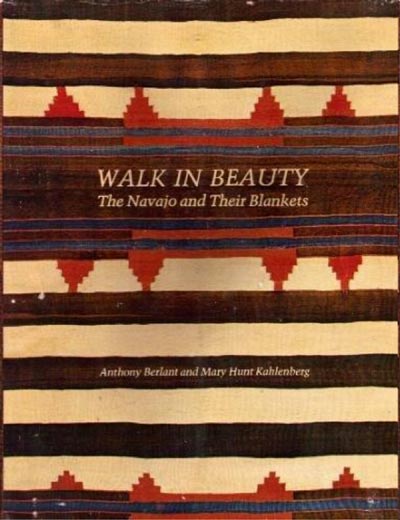
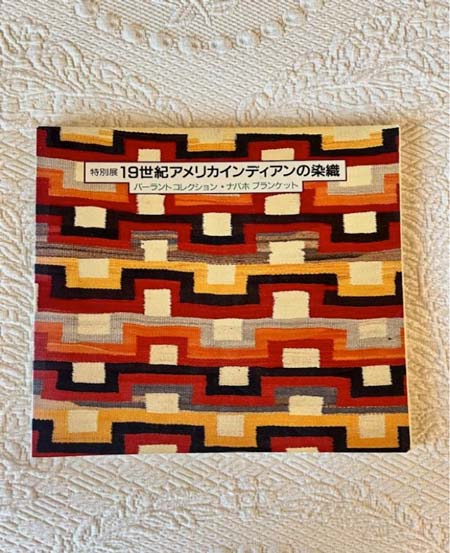
In 1984, Navajo blankets from Berlant’s collection were exhibited at the Machida Museum in Tokyo. The exhibition catalog, entitled The Berlant Collection of Navajo Blankets (with attributions, dates, and notes by Dr. Kathleen Whitaker Bennett) was published in conjunction with the Machida Museum exhibition. The Berlant First Phase is illustrated as Plate 7 in the exhibition catalog. Berlant and Whitaker date the first phase “1800-1860.”
In 1989, the Berlant First Phase was illustrated as Plate IX in Space and Design, an article by Joshua Baer about classic Navajo blankets that appeared in the September, 1989, issue of The Magazine Antiques.
In 1991, the Berlant First Phase was exhibited as part of Space and Design – The Art and the History of the Navajo Chief’s Blanket, at the Monterey Peninsula Museum of Art in Monterey, California. Space and Design was curated by Joshua Baer.
In 2010, forty-one years after Berlant purchased it at the Oakland Flea Market, the Berlant First Phase was purchased from Berlant by Joshua Baer & Company, in Santa Fe, acting on behalf of a private collector in Lake Forest, Illinois.
In 2014, the Berlant First Phase was purchased from the Lake Forest collector by Joshua Baer & Company, acting on behalf of the current owner.
In 2018, the first phase was exhibited as part of Agnes Martin / Navajo Blankets, at Pace Gallery, Palo Alto, and at Pace / Chelsea, in New York.
In the Berlant first phase, the blue yarns are handspun Churro fleece dyed in the yarn with indigo. The brown yarns are un-dyed handspun Churro fleece, carded and spun from three different brown fleeces. The white yarns are un-dyed handspun Churro fleece, from a single fleece.

The Berlant First Phase, Ute Style, Navajo, circa 1840.
The first phase measures 61 inches long by 77 inches wide, as woven.
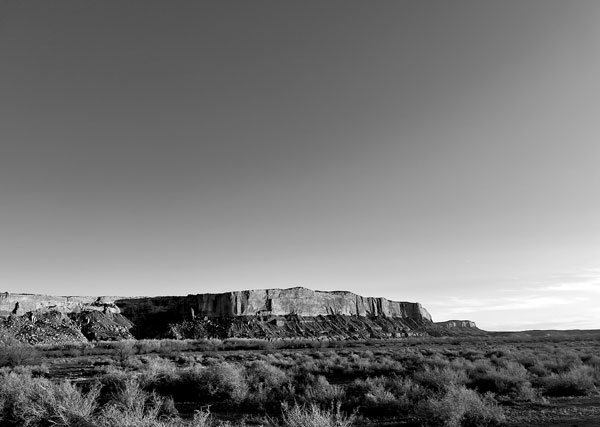
Sandstone cliffs along the San Juan River, southeast of Bluff, Utah.
Bluff has been a Navajo weaving center since the 1880s.


